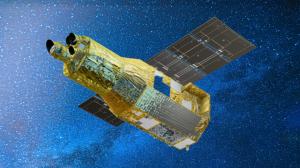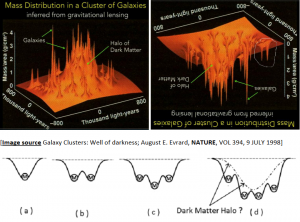XRISM data might revolutionize our understanding of X-ray sources and X-ray astronomy.
— Subhajit Waugh.
INDORE, MADHYA PRADESH, INDIA, August 29, 2023/EINPresswire.com/ — Japan is soon about to launch the X-ray space telescope XRISM. XRISM mission is a collaboration between NASA and JAXA. The objective of the mission is to investigate celestial X-ray objects in the Universe with high-throughput imaging and high-resolution spectroscopy. The latest updates can the followed from XRISM telescope news. Speaking on the occasion of the historic launch, Mr. Subhajit Waugh, a scientist working in RRCAT has confidently predicted that XRISM will shock the astronomical and scientific community at several levels. It will confirm what its predecessor, Hitomi X-ray telescope (ASTRO-H), observed: the gas velocities in the X-ray emitting plasmas in the intergalactic medium are much lower than expected. And this phenomenon is not limited to the Perseus cluster (Abell 426), but is a more widespread phenomenon. XRISM data will completely debunk the shock-wave heating mechanism of inter-galactic gases (which is the prevalent view). It will also find the gas velocity in the bullet cluster (1E 0657-56) is too low to maintain a sustained temperature ranging from 70 to 100 million Kelvins. Also, the velocity distribution will not match the temperature profile. It will also deeply question the structure of SpaceTime itself. Scientists will be forced to scratch their heads to understand how energy is getting transferred from the core of stars (which are nuclear fusion reactors) to vastly distant rarefied gases in deep space. An intense interest in solar corona heating will be regenerated, which might even prove immensely beneficial for future magnetic confined fusion reactors (Tokamaks).
The X-Ray Imaging and Spectroscopy Mission (XRISM), is an X-ray astronomy satellite of the Japan Aerospace Exploration Agency (JAXA) to provide breakthroughs in the study of structure formation of the universe, outflows from galaxy nuclei, and dark matter. As the only international X-ray observatory project of its period, XRISM will function as a next generation space telescope in the X-ray astronomy field. Several types of astrophysical objects emit X-rays. They include galaxy clusters, black holes in active galactic nuclei (AGN), galactic objects such as supernova remnants, stars etc. XRISM’s precision measurements will unveil a Universe in motion. The mission aims to observe X-rays coming from deep space and to identify their wavelengths with unprecedented precision. XRISM, a joint mission of the Japan Aerospace Exploration Agency (JAXA) and NASA, with a further contribution from the European Space Agency (ESA), is expected to operate for around three years. The mission will focus on lower-energy, ‘soft’ X-rays, and in particular on the calorimeter, which was the feature that the astronomy community needed most urgently. XRISM’s capabilities will be unique until ESA launches its Athena space observatory-carrying a more sophisticated version of the calorimeter-in 2035.
XRISM must repeat something sensible which its predecessor did. It had focused its attention on the Perseus cluster even before the calibrations and commissioning was complete. It was thus able to provide extremely valuable information before its early demise. While the scientific community prays for a long life to XRISM and its resounding success, JAXA should not wait. It must focus the XRISM on the Perseus and Bullet Clusters as soon as possible.
Comparing the Bullet Cluster data from other telescopes, XRISM will soon confirm that the Intracluster Medium (ICM) weighs only a negligible portion of the total mass of the galaxy cluster. This will be a shocking departure from the present belief that roughly 10 percent of a galaxy cluster’s mass resides in the ICM, while the stars and galaxies contribute only 1 percent to the total mass (while the rest whooping majority is Dark Matter). This claim is already evident from the gravitational lensing data: the lensing mass is almost coincident with the visible galaxies. The ICM which is supposed to carry the entire Baryonic Mass hardly shows its presence in gravitational lensing! Unfortunately, the presence of almost all the mass in the visible galaxies is presently attributed to Dark Matter. How good it would have been if the scientific community had followed Sherlock Holmes’ advice and adjusted their theory according to evidence, and not vice versa. The tightest correlation of Dark Matter to the visible Normal Baryonic matter (which Euclid telescope, the contemporary of XRISM, will prove again and again) actually strongly disfavors Dark Matter, and questions its need. Mr. Subhajit Waugh has shown that our present understanding of the concept of SpaceTime is wrong (Ref. 1), and Dark Matter is merely a relic of our misunderstanding of General Relativity. He asserts that Dark Matter is not required (Ref. 2 and 3). With upcoming data from XRISM, the Bullet Cluster will prove to be a bullet in the chest of Dark Matter. The mass of galaxy cluster is concentrated in the galaxies, and the mass of galaxies are concentrated in the stars.
The space between galaxies is emptier than the best vacuum humans can make in the lab. The average density of the intergalactic medium (IGM) is about one atom per cubic meter: less than a billionth of a billionth of the density of air on Earth (which also means that the IGM would not weigh 10 times the mass of the galaxies themselves). Despite that, the temperature of IGM is millions of degrees. Gas this hot produces X-rays. But what is heating the plasma to such incredibly high temperatures? Shock heating is not a good option to consider. Besides, the hotter a body, the faster it cools (the rate of cooling of a body is directly proportional to the temperature difference between the body and the surrounding). And in the freezing environment of deep space, maintaining a temperature of tens or even hundreds of millions of degrees is not a matter of joke. Scientists have realized the practical difficulty in maintaining millions of degrees while working with magnetically confined plasma in tokamaks (especially if there is any slightest contamination of heavier elements). Scientists have even joked that they can apply for a patent for rapid cooling of fusion plasma. In IGM, there is lots of contamination of heavier metals (which is referred as metallicity). In addition, the gas density in IGM is too low (and thus the specific heat is very low, which means it cannot retain heat energy), and the mean free path is too long (in the range of light year) for collisions to occur in sufficient numbers to maintain millions of degrees temperature. Therefore the IGM needs sustained energy supply to glow in the X-ray region. The only sensible source of energy nearby is the stars in the galaxies, which are constantly generating heat through nuclear fusion reaction.
So, what is the mechanism that is continuously pumping energy to the IGM? One possibility is magnetic heating. An example is the mysterious solar corona heating. The Sun’s surface is about 6000 Kelvin. But as one goes further away to the corona region, the heat there is millions of Kelvin. To realize how bizarre that is, one needs an analogy. Imagine a campfire. As one walks away, the temperature falls, just as one would expect. But then, the temperature starts rising again, and becomes hot like a burning building. After lots of studies, the coronal heating has been attributed to magnetic heating (Ref. 4), quite similar to how an induction heater works. Observations show that the coronal X-ray emission of the Sun and other stars depends on the surface magnetic field. A power-law dependence of the X-ray emission on the magnetic flux has been established. This finding is consistent with a wide range of observations, from the Sun to stars of different types.
Another possibility is that energy can be carried by the fabric of SpaceTime itself and dumped at far off regions. There is a strong link between gravity (involving fabric of SpaceTime) and electromagnetism. Kaluza’s theory unified gravitation and electromagnetism (Ref. 5). Unfortunately, the theory had been neglected by scientists for too long as it seems to require a fifth dimension. However Mr. Waugh has shown (Ref. 6) that this fallacy/error occurred due to improper understanding of imaginary numbers. When an imaginary sign is present, an additional dimension (i.e. perpendicular axis) is not created. An imaginary sign hides in the crucial Minkowski SpaceTime metric (as well as Schwarzchild metric). Minkowski metric is not an equation for 4D SpaceTime continuum (as Einstein and Minkowski wrongly believed). It all boils down to one missing dimension, which has created a mess in physics and cosmology. Therefore, Kaluza’s forgotten ideas must be revived. The exact mechanism behind the electromagnetic energy transfer by the fabric of SpaceTime is still unclear and mysterious. However, some insights (for scientists and technical experts only) are provided in the FURTHER READING section. Meanwhile, general readers may enjoy watching these wonderful XRISM videos.
REFERENCES
1) The biggest mistake in Science: Space and Time do not fuse into SpaceTime continuum.
https://www.einnews.com/pr_news/645681233/the-biggest-mistake-in-science-space-and-time-do-not-fuse-into-spacetime-continuum
2) Is everything we know about the shape and size of our universe, and how it works, wrong?
https://doi.org/10.5281/zenodo.7343171
3) Quantum Mechanics and General Relativity are compatible, and have a common origin: the expanding (hyper) balloon universe
https://www.authorea.com/users/497173/articles/578321-quantum-mechanics-and-general-relativity-are-compatible-and-have-a-common-origin-the-expanding-hyper-balloon-universe
4) Stellar coronal X-ray emission and surface magnetic flux
https://www.aanda.org/articles/aa/full_html/2020/08/aa38022-20/aa38022-20.html
5) Kaluza–Klein theory
https://en.wikipedia.org/wiki/Kaluza%E2%80%93Klein_theory
6) RRCAT Physicist Claims Correct Representation of Imaginary Numbers May Unify General Relativity and Quantum Mechanics
https://finance.yahoo.com/news/rrcat-physicist-claims-correct-representation-202518538.html
FURTHER READING:
Electromagnetism is a property of spacetime itself, study find
https://sciencex.com/news/2021-07-electromagnetism-property-spacetime.html
Electromagnetism is an inherent property of spacetime itself. In a way, spacetime itself is therefore the aether. Electric and magnetic fields represent certain local tensions or twists in the spacetime fabric. Our research shows that the Lagrangian of electrodynamics is just the Einstein-Hilbert action of general relativity; it reveals how Maxwell’s equations of electromagnetism are an optimality condition for the metric of spacetime to be sufficiently flat. As Einstein’s theory of general relativity provides that the metric is optimal in a sense, electromagnetism is hidden in the nonlinear differential equations of general relativity. On the other hand, this means that general relativity is a generalized theory of nonlinear electromagnetism.
Tensions in spacetime manifest themselves as electric and magnetic fields. Moreover, electric charge relates to some compressibility properties of spacetime. Electric current seems to be a re-balancing object, which transports charge in order to keep the spacetime manifold Ricci-flat.
Riemann curvature tensor is more than just Ricci curvature-electromagnetic fields stretch and bend the spacetime. Maxwell’s equations are a condition for the spacetime to be Ricci-flat, electromagnetic fields do seem to cause special curvature in spacetime nevertheless. The relevant curvature is what is known in differential geometry as the Weyl curvature. Weyl curvature in spacetime is the local curving of spacetime in such a way that locally, volumes are preserved. It is a special kind of stretching and bending of spacetime.
Maxwell’s equations in curved spacetime
https://en.wikipedia.org/wiki/Maxwell%27s_equations_in_curved_spacetime
Classical electrodynamics as the curvature of a line bundle
https://en.wikipedia.org/wiki/Mathematical_descriptions_of_the_electromagnetic_field#Classical_electrodynamics_as_the_curvature_of_a_line_bundle
Spacetime structure and electromagnetism
https://www.worldscientific.com/doi/10.1142/S0217732310032883
Do electric charges and magnets distort space, in the way that a source of gravity does?
https://www.scientificamerican.com/article/do-electric-charges-and-m/
subhajit waugh
RRCAT (Raja Ramanna Center for Advanced Technology)
email us here
Visit us on social media:
YouTube
Other
Mr. Subhajit Waugh appeals the audience to watch and share the United Nations Anthem video (with lyrics). The World needs the UN now more than ever before.
![]()
Originally published at https://www.einpresswire.com/article/652446498/japan-jaxa-is-about-to-launch-x-ray-telescope-xrism-to-illuminate-universe-s-x-ray-secrets





